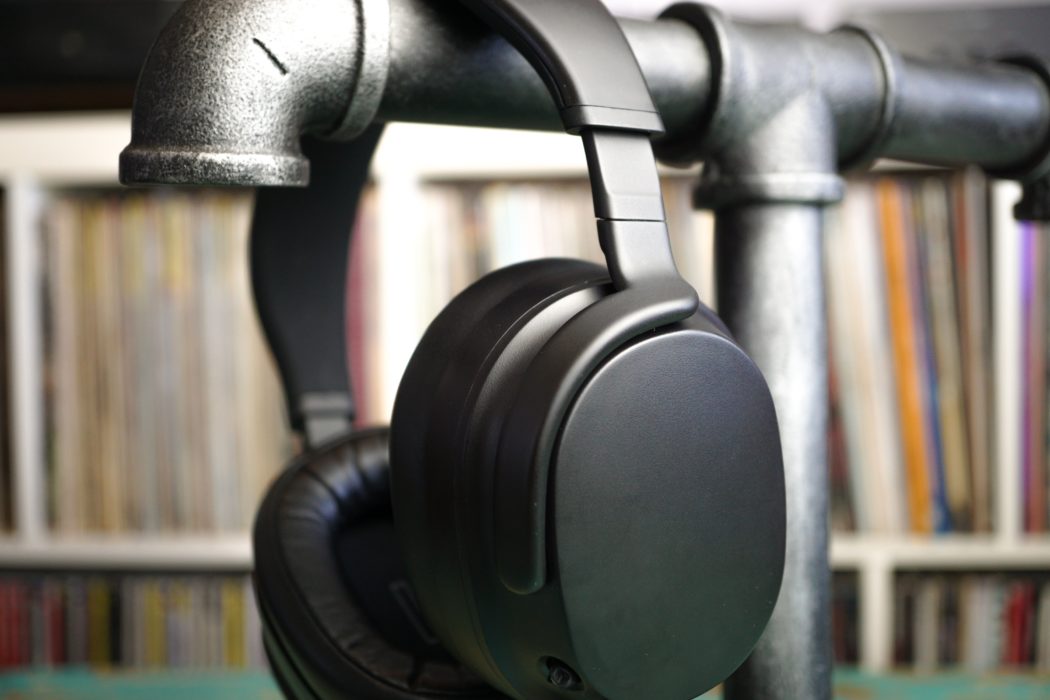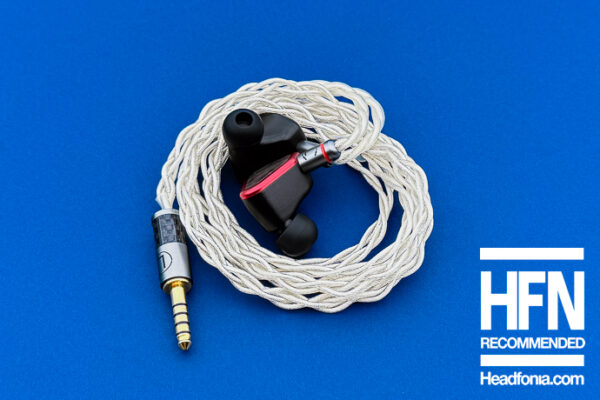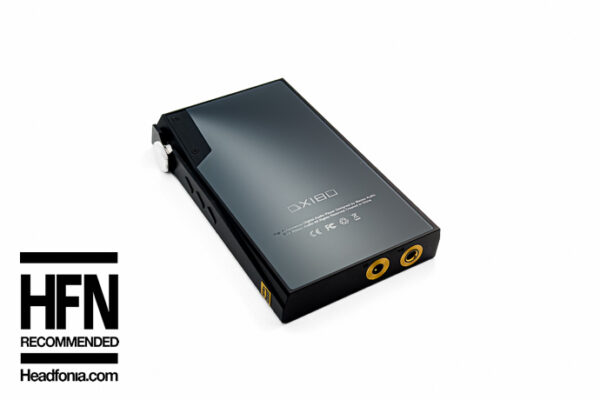Today we review the Drop THX Panda wireless headphone which sells for $399 USD via drop.com.
Disclaimer: The Drop THX Panda headphone was loaned to us directly for our review, but has since been returned to Drop as this is a pre-production prototype.
It’s an interesting development story, and an equally interesting product so there’s a lot to get through – we recommend you sit-down, make yourself a coffee, and put on some of your favourite tunes first.
We’re excited to be giving Headfonia readers our impressions of one of the most exciting new product developments in recent times, and perhaps the most anticipated headphone of 2020: the new Panda wireless audiophile closed-back headphones, a collaboration between Drop (formerly Massdrop) and legendary audio research and certification company THX. Drop got in touch with us to ask if we’d like to check-out a pre-production unit while they’re fine-tuning the final retail version of the Panda (which is expected ship in August 2020), and given the level of buzz around this new product, we thought you guys would appreciate some early impressions.
Prior to the Panda’s official launch (where it will be available for $399 USD via Drop.com), an Indigogo backing campaign is live until late March, allowing customers to help contribute to the final development phase of the Panda’s development, select ‘perks’ and ensure that they’ll be able to get their hands on one of the first batches of units when they’re ready to ship. At the time of writing, the campaign has raised 2635% of its planned funding goal, which suggests that the audio community believes that Drop is onto a winner with the Panda, an all-new kind of audiophile headphone: the Bluetooth, closed-back portable kind that promises equally impressive performance with or without wires. Or, as Drop put it: “the world’s highest fidelity wireless headphones”.
Just under 4,000 backers have already bought-into the Panda based on it specs, pedigree, publicity and early reviews alone. We took our pre-production Panda through its paces over a couple of weeks to see if it is indeed worth the hype, and to help give Headfonia readers a better idea of whether they should get on-board the ‘hype train’. So without any further ado, let’s take a look!

Drop + THX Panda.
An all-star collaboration
As its name suggests, the “Drop THX Panda” is the result of the latest coming-together of the Drop.com enthusiast/community retail platform and industry technology stalwarts THX. The first time these two companies collaborated on a consumer audiophile product – the THX AAA 789 Headphone amplifier – it brought about a community response that bordered on hysteria. Production runs were sold-out in mere hours, inflated prices appeared on private sale forums, and a whole new wave of objectivist viewpoints became the norm as this affordable yet impeccably-measuring amplifier set all-new benchmarks for performance and value.
Inspired by the success of their first outing, Drop and THX have buddied-up again to see if they can make lightning strike twice with an altogether different category of product: an all-new wireless headphone featuring discrete THX AAA (Achromatic Audio Amplifier) feed-forward technology packed inside. Drop (formerly Massdrop) has been better known for partnering with established personal manufacturers including Cavalli, AKG, Focal, and Meze Audio to create bespoke versions of existing products for Drop.com members. Far and away the most successful collaboration to date has been Drop’s co-production with Sennheiser, the HD6XX – a special colourway version of the venerable HD650 that has brought affordable audiophile performance to almost 100,000 consumers globally.
THX’s audio credentials need no introduction – the movie buffs among you will be all too familiar with the ‘Deep Note’ that you often hear blasted before a screening. But you’d be forgiven for not realizing that Drop has in-house engineering and development chops of their own, given their focus on collaborations in the past. I was interested to learn that Drop designed the Panda’s discrete amplification circuits based off THX’s technology when I had the chance to chat with Drop.com co-founder and Chief Product Officer Will Bright (also a mad audiophile!). Will gave some really great context and insight into both the technological and community ingredients that make-up the Panda.
Drop.com’s 7 million members are not only a good source of business, but also an incredible source of product-planning intel thanks to their vibrant and engaged community forums. Drop is able to gauge community sentiment and discuss product development with their members in real-time, meaning they can beta-test ideas and hear about what makes-up their customers’ ‘wish-lists’. So when Drop started planning a ground-up headphone of their own, the first place they went to for feedback and input was their own communities. After hearing what their customers were looking for out of a no-compromise, wireless pair of headphones, they needed to bring additional collaborators into the equation.
Oppo might be better known outside of audio circles for their mobile phone technology, but until recently they had a very capable audio division, famous for their DAC/amps (I still lust after a HA-1 of my own, still to this day…) as well as three very well regarded planar magnetic headphones: the PM-1 and PM-2 open-back models, and the excellent PM-3 closed-back portable headphone. To this day, the PM-3 still manages to be the only portable, over-ear closed-back planar magnetic headphone that has ever existed (to my knowledge, please correct me below if you know of any others), and it also managed to be a very, very good one at that. Oppo spent substantial R&D developing their own special ‘ribbon’ planar technology, achieved by placing magnets on either side of the transducer to allow for better control, with improved phase and distortion characteristics. So with the demise of Oppo’s audio division in 2017, Drop saw an opportunity to take proven on-shelf technology and apply it to their new wireless project and hence acquired the technology for their own.
The article continues on the next page. Click here or use the jumps below.









Peter
Great review! These are on the list now! Seen a lot of reviewers raving about them already, but this review is a bit more thorough then the rest of them. Great job!
Matty Graham
Thanks Peter, glad to hear you found it useful – I hope you enjoy the production model.
Robert
How would the Panda compare with the Sennheiser HD1 Wireless?
Matty Graham
Cheers Peter! I hope it gave you a good idea as to what we can expect when the launch version arrives.
Robert
How would the Panda compare with the Sennheiser HD1 Wireless?
Matty Graham
It would be an interesting comparison – that’s for sure. The Panda is a little more ‘purist’ in the way it’s been designed, but not having compared directly I couldn’t say exactly – it probably depends on whether you’re a traveller (and need ANC), or looking for straight-up SQ.
Usman
A comparison to the Sony WH-1000XM3 would also be helpful !
Matty Graham
Hey Usman, I don’t have either on hand to compare any more, but I distinctly remember the Sony having a dark, mid bass-centric sound. And of course, they’re designed to actively cancel noise. The Panda is hands-down better in terms of sound quality, and I’d say it’s passive isolation is a “fine” trade-off.
Toni
About Panda vs Meze 99 Classics – which do you prefer was more comfortable? Do you think that Panda had bigger and softer pads or how was it? I have Meze’s and I’m thinking to purchase Panda for office use. I like the Meze’s but sometimes I just wish that the pads were softer and maybe a bit bigger.
Matty Graham
Hi Toni, the Panda is a snugger, more comfortable fit overall and also isolates better.
arnold
Nice review!
How does the sound quality compare to the Audeze EL-8?
Ajith Nambiar
How does one get hands on a panda in Australia. The drop check out says doesn’t ship to Aus when I put my address as Melbourne.
Tony Peng
I think nowadays would be a lot harder, I got my pair in Australia via the Panda was still in crowd funding stage on Indiegogo. Now you can only purchase it through the official website on Drop
Zaza Asatiani
Hi Matty, you did a fantastic job. Thanks!
Can we say that Drop Panda is the best sounding wireless headphones currently available on the market?
Before I heard about Panda for first time, I had a dillemma to decide between Beyerdynamic Amiron Wireless, Audio-Technica DSR9BT and Shure Ionic 50.
Have you listend to them as well? Any comparison with Panda?
Best Regards,
Zaza
akira
hey, ive been searching for a long time for a comparison between the mobius and panda. could you please elaborate on that comparison. I really wanna know which one sounds better
. Im planning to use it with a fiio m5.
I just want to know which one sounds better
Matty Graham
Hi mate, I’ve just got my hands on the production Panda so I’ll let you know in a week or so after I’ve had a good listen to them.
akira
thanks sooo much, ive heard the mobius arent good for music but I dont believe that. id like to hear from you what you think about them both. seeing as your an experienced audiophile